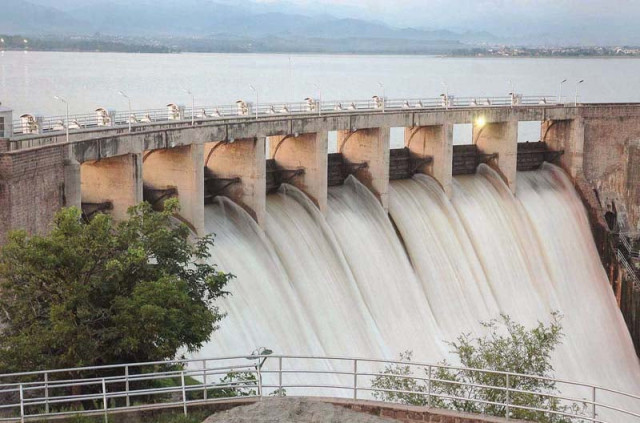The district administration opened the Rawal dam spits on Sunday after continuous precipitation increased the water level of the tank to 1,748 feet.
According to the spokesperson for the administration of the territory of the capital of Islamabad (ICT), the level was only four feet under the maximum storage capacity of the 1,752 feet dam, which prompted the release of water to mitigate the risk of overflow.
The officials confirmed that after having unloaded the water for about six and a half hours, the water level of the dam fell to 1,746 feet. The spills were then closed when the situation stabilized.
The decision to open the spills was taken in coordination with various departments, including the district administration, rescue 1122 and the Water and Sanitation Agency (WASA).
These teams have been deployed in critical places, including bridges, streams and vulnerable points downstream, to manage the flow of released water and ensure public security.
The assistant commissioner of Nilore supervised the entire water release operation, supervising the security measures on the ground.
The magistrates, the 1122 rescue teams, the ambulances and the staff of the Union council have remained stationed on various bridges and along the rivers of watercourses throughout the exit period.
The administration has maintained contact with Pakistan Meteorological Department (PMD) to monitor precipitation patterns and assess other risks.
According to managers, the dams of the dam are only open when the tank is closer to its storage limit, to manage water pressure and avoid potential damage to the structure of the dam.
The authorities have assured that despite the heavy rains, no flood or major emergency has been reported downstream due to coordination and surveillance in a timely manner.
However, residents living near the water canals were invited to remain vigilant for district administration updates in the event of additional precipitation.
The Rawal dam provides water in Islamabad and Rawalpindi and plays a key role in the management of seasonal rains.
Its operation, as well as meteorological surveillance, are part of the wider efforts to mitigate the risk of urban floods in twin cities during the monsoon season.
The district administration said it would continue to monitor the situation closely and take preventive measures according to future weather forecasts.
The public was invited to cooperate with the authorities and follow the safety instructions to prevent any unfortunate incident.
Earlier in the day, the meteorological department had planned additional precipitation in the region, which raises concerns concerning the increase in water levels in dams and rivers.
The administration, however, reassured that all precautionary measures were in place to deal with the impact of continuous rain.




